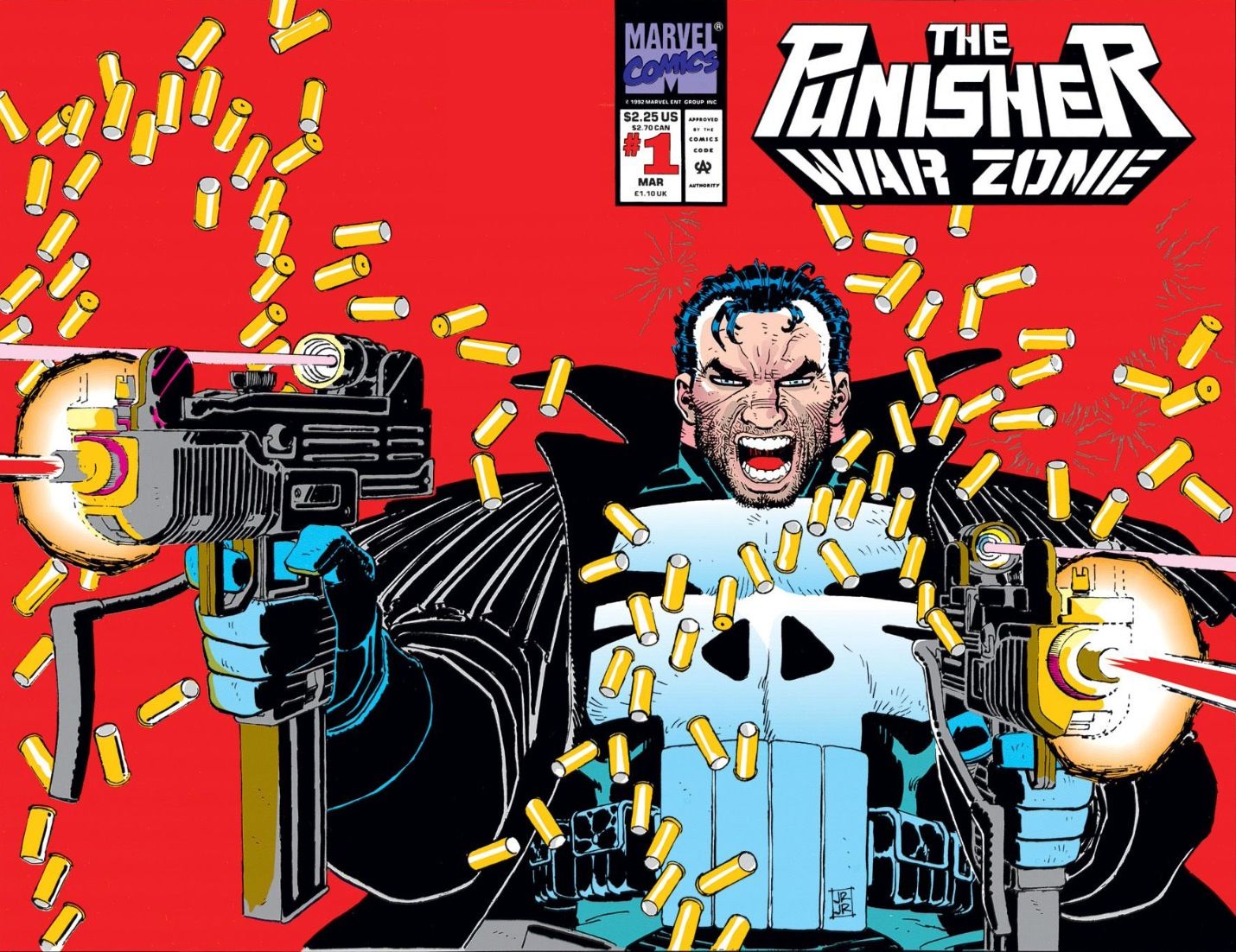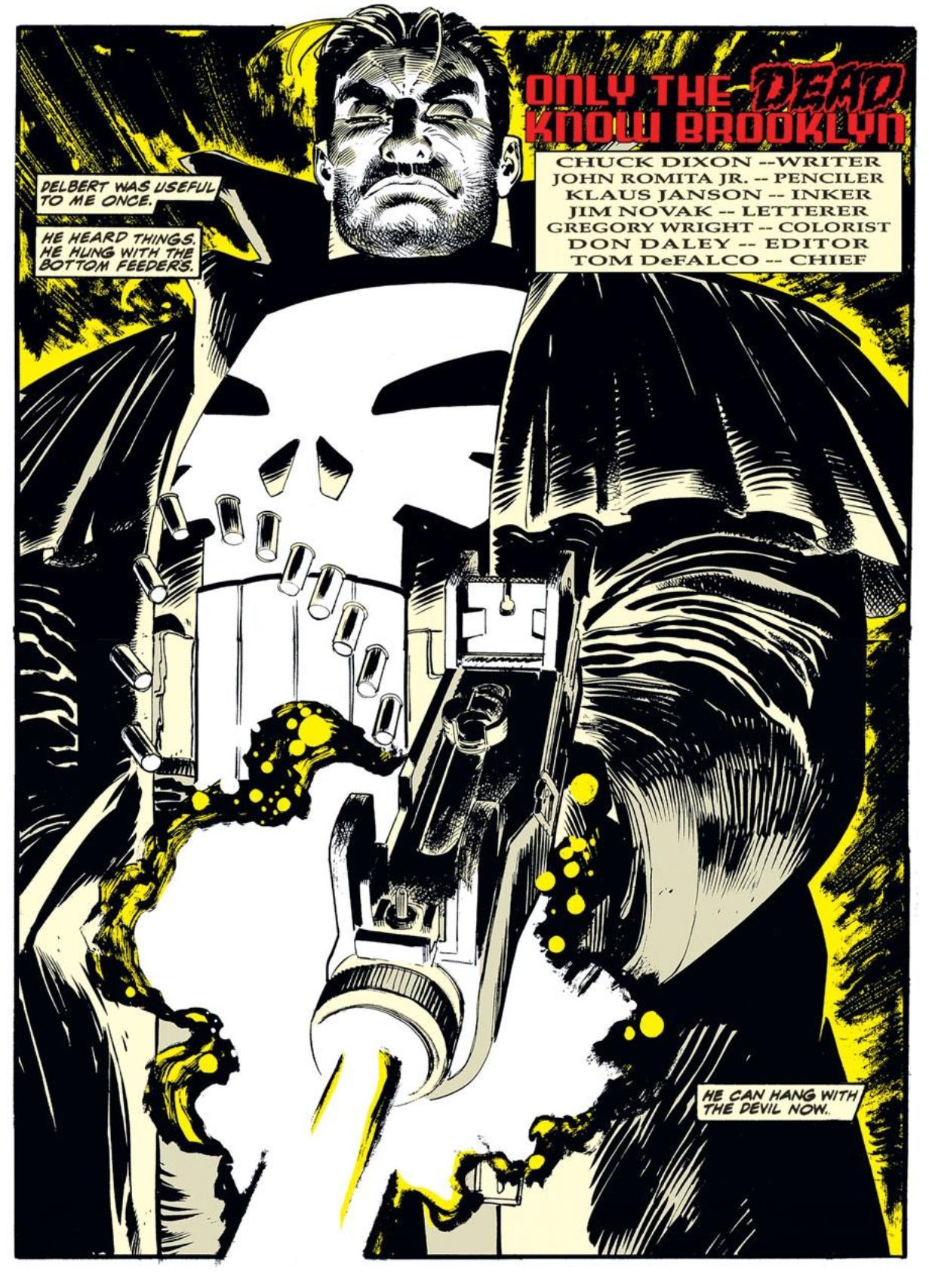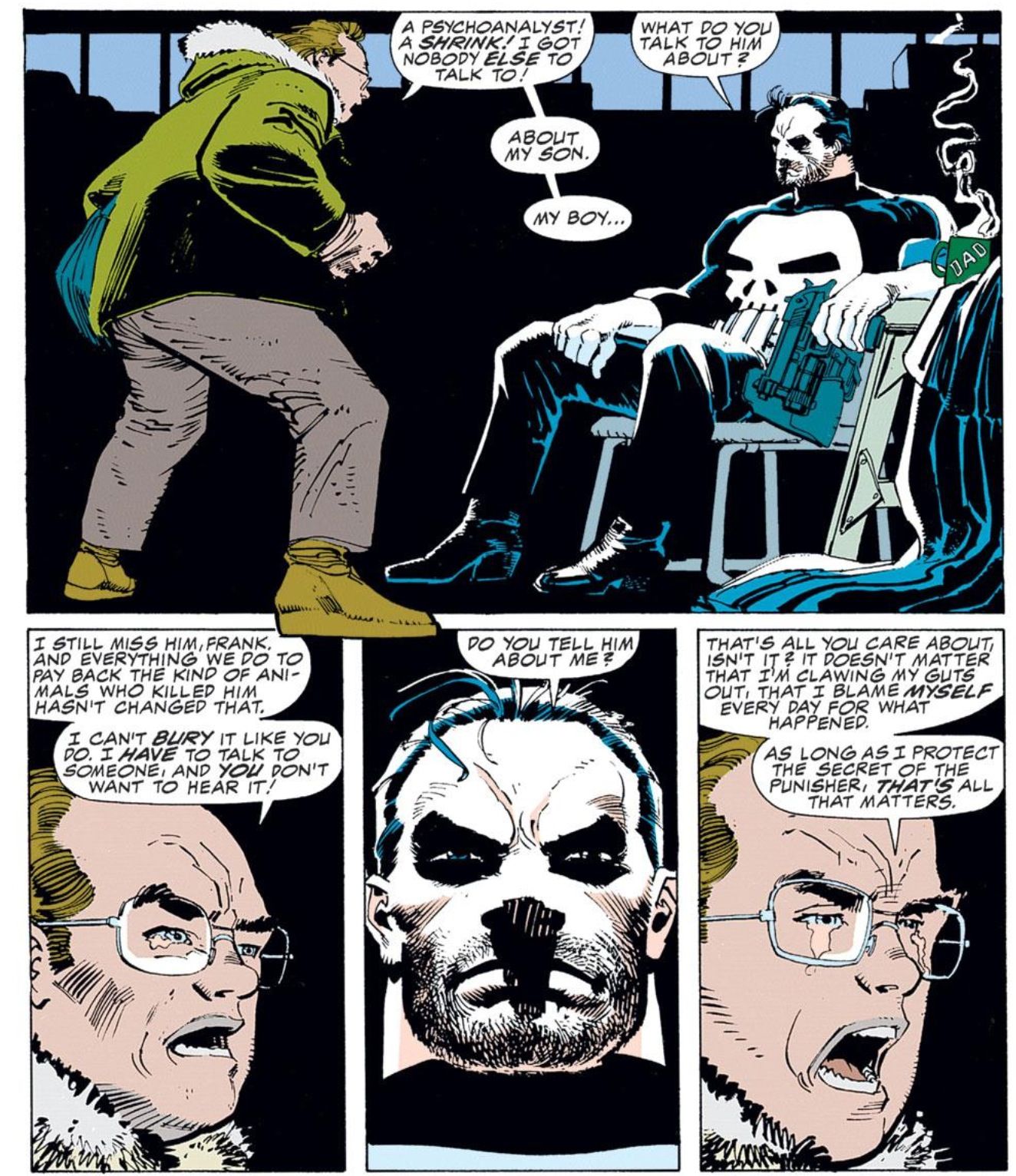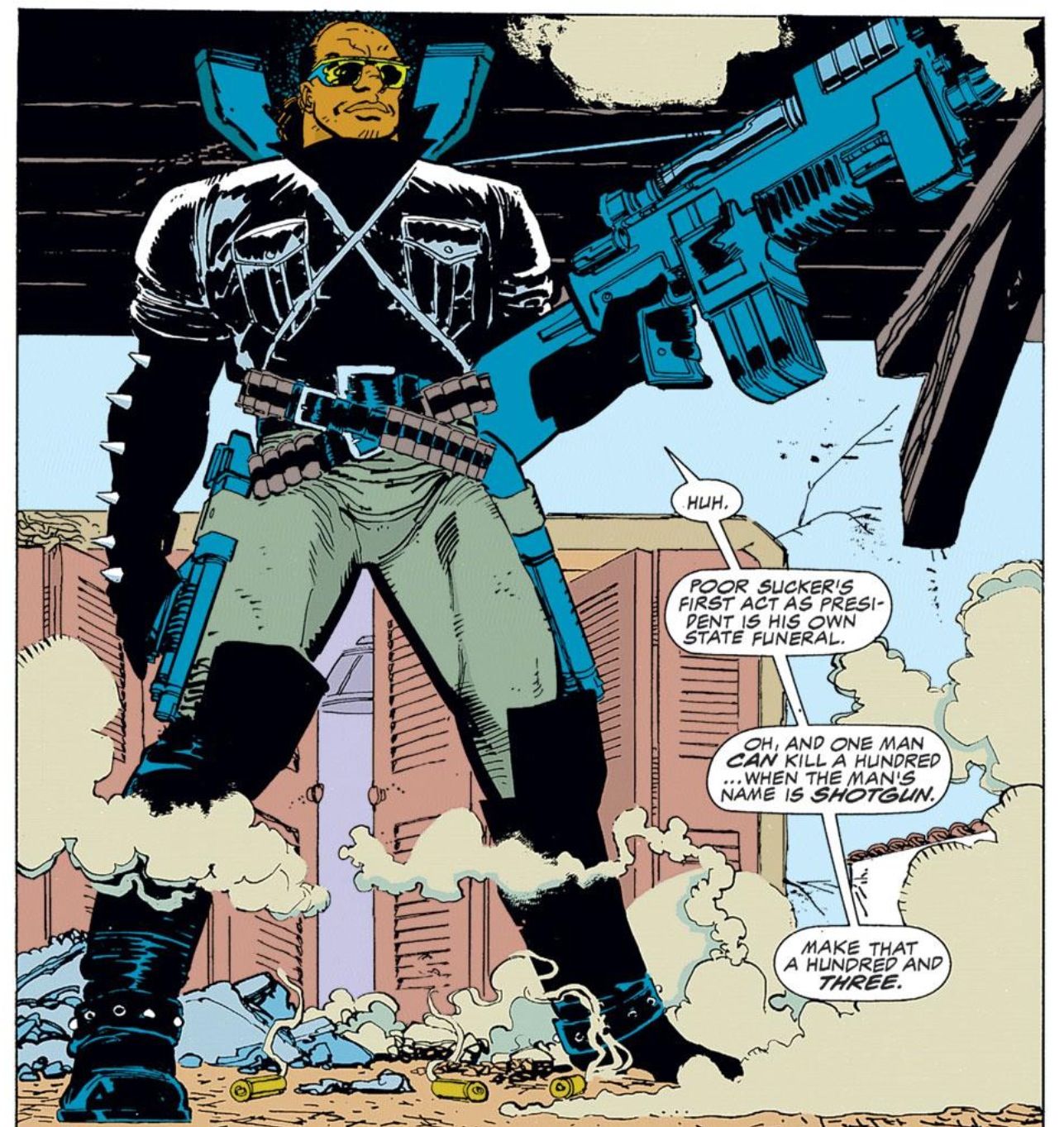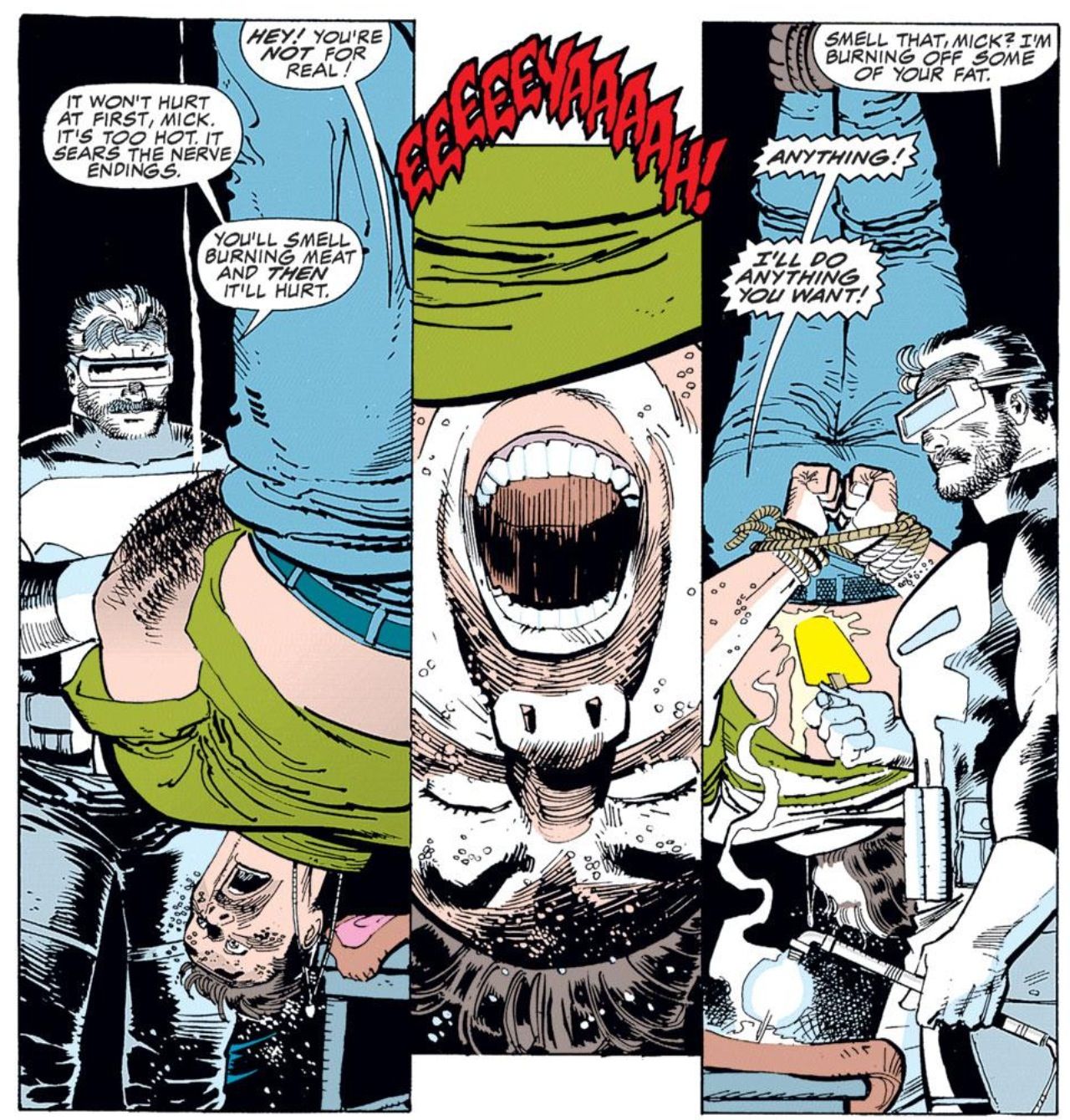In this column, Mark Ginocchio (from Chasing Amazing) takes a look at the gimmick covers from the 1990s and gives his take on whether the comic in question was just a gimmick or whether the comic within the gimmick cover was good. Hence "Gimmick or Good?" Here is an archive of all the comics featured so far. We continue with 1992's gatefold die-cut cover for Punisher War Zone #1...
Punisher War Zone (published March 1992) – script by Chuck Dixon, pencils by John Romita Jr., inks by Klaus Janson
By the early 1990s, Frank Castle, aka, The Punisher, had emerged as one of Marvel’s hottest commodities, leading to the launch of Punisher War Zone, the third monthly title starring the character (a mother later, the Punisher Armory series resumed publication at issue #3 after a year-long absence). But the series may be best remembered for the return of fan favorite son John Romita Jr., aka JRJR, on pencils after a nearly two-year absence from monthlies (having last penciled Daredevil #282 in 1990). As was customary during this period, this new #1 issue sported a gimmicked cover – a die-cut image of the Punisher firing off an automatic weapon which also folded out to expand the visual (and another firing gun).
But what about inside the comic?
Perhaps no Marvel character symbolized the excesses that would doom the comic book industry in the 1990s quite like the Punisher. Originally conceived as a delusional bounty hunter adversary for Spider-Man by Gerry Conway in the early 1970s, Punisher had grown into a hugely popular anti-hero that was inserted into titles and one-shots across the Marvel universe. Best capturing how mindlessly the character was marketed is an anecdote in Sean Howe’s tell-all book, Marvel Comics: The Untold Story. According to Jim Starlin, Marvel execs told creative, “If the Punisher appears in a panel with another character, that character should be killed within the next few pages by either the Punisher or someone else. If the Punisher appears with any object, it should be destroyed in an explosion as soon as possible.”
True to form, War Zone #1 opens with a rogue informant in the Punisher’s self-declared war on the Carbone crime family dying in a hail of bullets, while two police officers (one critically injured) look on helplessly. The uninjured officer threatens to bring Punisher in, but he calmly walks away from the scene, unrepentant. This is the tone that is more or less maintained for the entire book, and I assume the entire series (even for the sake of research, I don’t think I have the patience to read all 41 issues of War Zone to verify this).
And there’s your rub with a Punisher comic, especially during the “chromium era” of Marvel comics. If you checked out this issue to see pretty JRJR/Janson pictures of over-indulgent bloodshed, and the brandishing of weapons so extreme, even the staunchest defender of the Second Amendment would probably rethink his position, then War Zone was for you. And considering how over-saturated the comic market was with Punisher during this time, I imagine a lot of people devoured this story up and asked for seconds and thirds.
In an attempt to read this with more of a critical eye, the comic’s biggest flaw is that the Punisher is just not a likeable protagonist – even from an anti-hero standpoint. We know from the onset that he’s out for vengeance based on what happened to his family, but the character just cruises from scene to scene, shooting first and rarely ever asking questions. The only character who seemingly attracts any sympathy is Punisher’s sidekick Microchip – a computer whiz “Q” type – who tells Castle that vengeance isn’t enough and he needs professional counseling to deal with the death of his son. And Punisher becomes even less likeable in that moment (if that’s even possible) because he’s more concerned with whether or not Micro sold out their partnership to his shrink.
Adding further to War Zone #1’s mindless excesses is the appearance of another mega-gun toting vigilante, Shotgun (a creation of JRJR and Ann Nocenti’s during their run on Daredevil), who raises the comic’s body count after shooting up a bunch of Carbone mobster’s on an island. Punisher and Shotgun would go on to work in tandem as the series continued. Again the creative team fails to give me a single reason to identify/care about this guy beyond the fact that he’s brandishing a comically large gun.
On a somewhat redeeming note, War Zone #1 does present what I have to believe is a comic book first – torture by popsicle – proving, as Castle notes, “it’s not how much it hurts, it’s how much you think it hurts.” I actually really appreciate Punisher getting the upper hand on some D-level goon without resorting to a pair of machine guns.
Still, popsicles alone do not a story make. I will say again that the art in this issue is actually really awesome to look at, especially if you have a gun and bullet fetish, but the story is so flimsy and Punisher is such a creep, in retrospect it just makes so much sense to me that by 1995 the Punisher gravy train would run dry and the bulk of his titles would be cancelled.
Verdict: Gimmick

